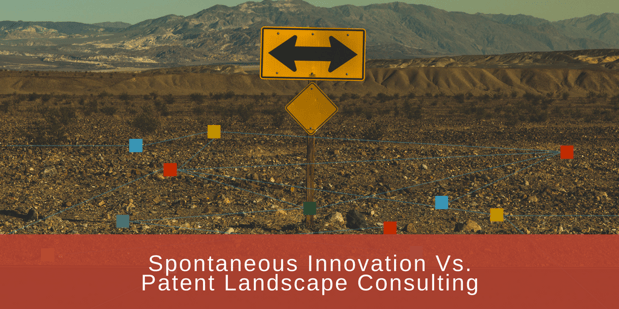 It’s true that spontaneous innovation often results in revolutionary ideas. Without freedom to brainstorm, the wheel, the car, Internet calling, digital cameras, and Netflix might not exist. This is often where truly disruptive ideas emerge—ideas that could change the face of business.
It’s true that spontaneous innovation often results in revolutionary ideas. Without freedom to brainstorm, the wheel, the car, Internet calling, digital cameras, and Netflix might not exist. This is often where truly disruptive ideas emerge—ideas that could change the face of business.
Yes, the truly radical idea is something of a Holy Grail to businesses, but is it realistic to seek these spontaneous innovations without an eye toward IP intelligence? For the established brands out there looking to maintain or regain market share, innovation may need to exist in several different forms.
Solving the Problem
For the sake of brevity, let’s consider the vacuum cleaner. From the humble carpet sweeper of 1860 to the high-tech Dyson of today, vacuum cleaners have gone through plenty of innovation and improvement.
While the high-tech Dyson is considered a modern marvel, the real spontaneous innovation in this story—apart from the first vacuum cleaner, of course—has come only a few times. We might consider the wet vac a creative improvement. Hand-held vacuums were certainly a game changer. Then, of course, there’s the Roomba, a self-driven vacuum cleaner. Other advances throughout history have simply been improvements upon the first.
Now, understanding just how rare spontaneous innovation is, at least while considering vacuum cleaners, perhaps you can see why other types of innovation my be necessary to maintain market share. Solution-oriented creativity is what really keeps vacuum cleaners (and competition) alive.
Improving Upon Solution-Oriented Creativity
As with products and services, innovation can also be improved upon. Let’s consider a vacuum company that might want to compete with the Roomba. Of course, some have already released their own versions of the self-driven cleaners, but is direct competition really the way to go?
There are certainly ways to improve upon the Roomba through technology, but are those improvements meeting customer needs? Beyond that, are those improvements likely to infringe upon current patents for self-driven cleaners? You should know these things before tasking innovation and product teams with delivering new ideas.
Let’s say your company is losing market share in the vacuum cleaner sector. You’re determined that you’ll revolutionize the vacuum cleaner yet again in order to regain and maintain that market share. What is the next step? Gather the product developers and get to work on brainstorming? Determine customer need and try to solve for that? These are historically the next steps for most companies, but there’s yet another step you can take that will give you the advantage you’re looking for.
The Patent Landscape
Now, let’s say you know what customers are looking for. You have a list of the needs that other vacuums just aren’t meeting. Now it’s time to take the third step—the one so many companies miss. It’s time to obtain a patent landscape from IPVision so you can see the innovation and intellectual property already at work
What does patent landscape consulting offer? Well, for starters, you can immediately see what your competitors are doing. Search all the patents from your competition and see what they’re working on developing. This is something like a crystal ball into the future of your product line, right? Imagine if other vacuum cleaner companies had caught on to the Roomba’s self-cleaning technology before the little robot took the world by storm.
By obtaining that glimpse into the future, you know what competitors aren’t doing, too. Why try to create the same things when you can introduce something no one else is working on? A patent landscape shows you where that white space is so that you can further focus your innovation strategy.
Lastly, a patent landscape might just show you opportunities for acquisition. When you’re faced with the options of make or buy, you might find that buying the intellectual property you desire will cost less and take less time than attempting to create your own version (while trying to avoid infringement at the same time.)
As you can see, innovation can always be improved upon. Give us a call today to learn how patent landscape consulting could change the way you create.



